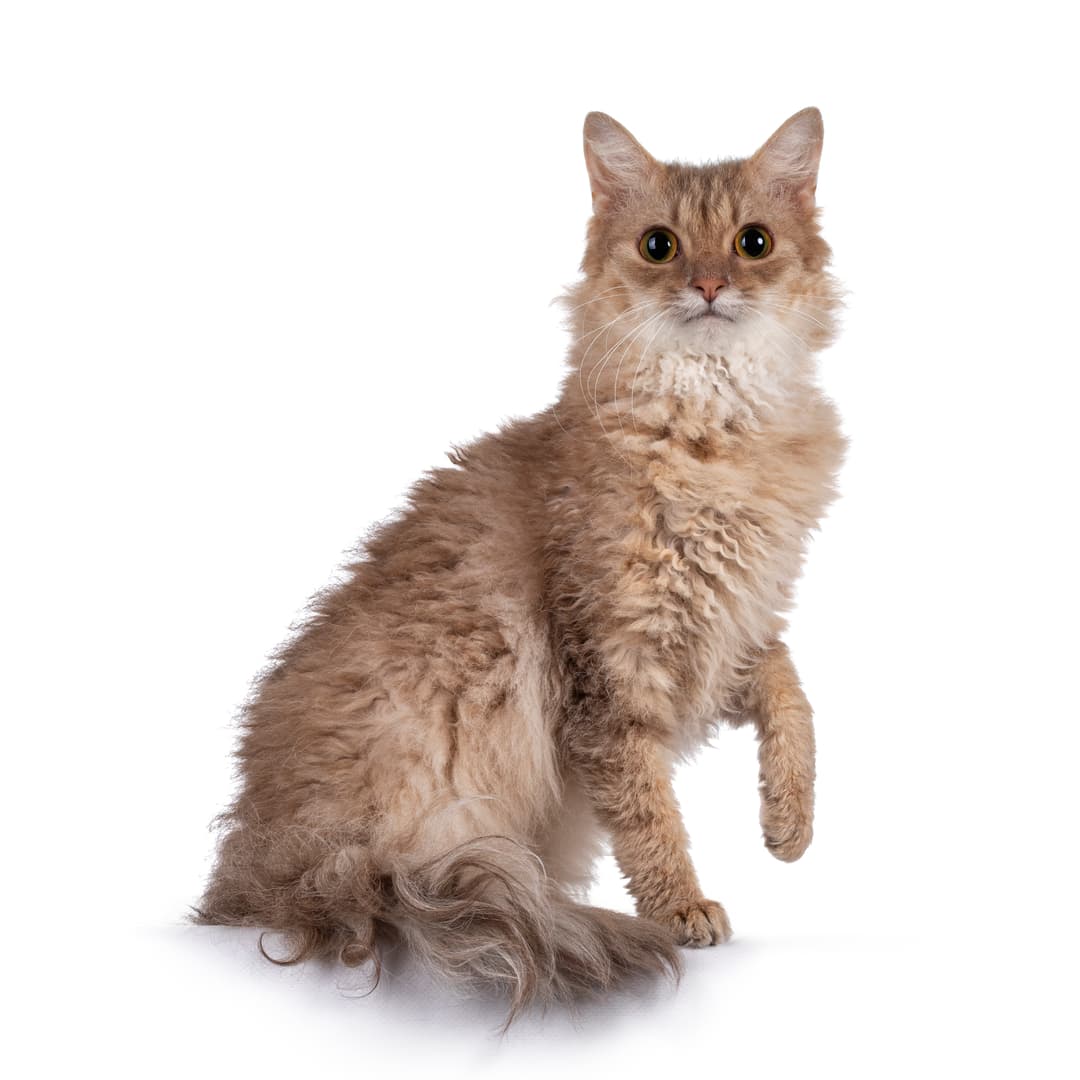Discover your cat's connection to this breed and 20 others


Discover your cat's connection to this breed and 20 others



The unique combination of delightful appearance and lovely personality captivates nearly anyone who has the pleasure of meeting a LaPerm cat. This American rex breed is a carrier of a unique genetic mutation that gives its cats their 'perm'.
The LaPerm is a medium sized cat with a muscular body. Their legs and neck are particularly long, and they have wedge-shaped heads. Their muzzle is broad, and their foreheads are
notably flat from a profile view. Although always distinctly unique for each cat, the LaPerms have an iconic, sensuous coat which is pompously curly and soft in texture. They can be both short-haired and long-haired, and they come in many colors and coat patterns. Some kittens may be born hairless or lose their short, wavy coat within the first three weeks post-birth. During the first four months of their life, these kittens go through different stages of baldness before finally growing their luxurious and iconic locks. The curls can vary as well, but they're usually tightest at the belly, behind the ears and on the neck. Their whiskers are usually curly as well. LaPerms’ eyes are large, almond-shaped and come in all eye colors.
In 1982, on a farm in Oregon, a litter of kittens was born to a barn cat named Speedy. One of her kittens was born completely hairless. Within eight weeks, the kitty started growing wavy, soft hair, inspiring its human friend Linda Koehl to name her “Curly”. Little did Linda know, her tiny kitten was about to kick off a whole new breed! As Curly was allowed to freely breed with the other cats, over the next ten years she produced kittens by various males in the area, including a Siamese and a Manx. All of her kittens shared her iconic and luxurious curls. It was later determined that this feature was a result of a dominant mutation and that these cats were distinct from the other rex, curly-coated breeds. Finally, in 2002, The International Cat Association recognized LaPerms as a distinct breed. This young breed, however, must still be out-crossed with other cats (mostly non-purebred) to maintain its genetic diversity.
LaPerms are friendly and loyal kitties who will often seek their favorite humans out and never miss the opportunity to greet them with a soft purr. They are the typical “lap-cats” many of us dream of. Despite their cuddly nature, they are quite mischievous, funny and high in energy, too. Always aware of their surroundings, these felines are constantly in action.
LaPerms are outcrossed with shorthaired and longhaired cats in breeding programs which ensures a high level of genetic diversity in the gene pool of this breed. This is why LaPerms
are typically very healthy cats. Your LaPerm's curly coat will require regular grooming, and dental hygiene needs to be maintained as well.
LaPerms are often thought to be "hypoallergenic". Firstly, it is important to remember that there is no such thing as a truly hypoallergenic cat breed. However, some breeds are more likely to have cats which produce fewer allergens or which shed less heavily and are
therefore less likely to cause allergic reactions. LaPerms have a particularly curly coat which sheds less heavily than the coat of an average cat, and some were also found to produce fewer allergens, thus being less likely to flair up your cat allergy. However, the majority of
LaPerms will still have the potential to cause allergic reactions, so trial and error may be necessary.
The LaPerm is the only curly breed which carries a dominant gene for curly coat. The genetic variant found in LaPerms is unique to this breed, and it was labeled as the Lp gene.
This mutation (like many other mutations associated with curly coat in other cats) occurred naturally and spontaneously in a domestic cat. There are many other genetic variants associated with curly coat in other cat breeds (i.e. Cornish Rex, German Rex etc.), but the only dominant gene is the one found in LaPerms. This gene is not related to any other rex cat varieties.
They are surprisingly low-maintenance. When you see the bouncing locks on the LaPerm, you may wonder how difficult it is to groom these kitties and keep their fur clean and matt-free. As it turns out, it's a lot easier than it looks. Although curly, their coat sheds very little, and a few strikes with a brush several times a week will do the job.
Their bouncing locks are full of variety. We have already mentioned that these cats can be shorthaired, longhaired, and that all colors and patterns are accepted. However, the shape and tightness of the locks is diverse too. The curls can be looser and wavy, or tighter and ringlet-like.
The International Cat Association (TICA) LaPerm Breed Introduction
The Cat Fanciers' Association (CFA) "About the LaPerm"
Recommended by top vets with decades of experience
21 breeds
64 genetic health markers
50 genetic trait markers
